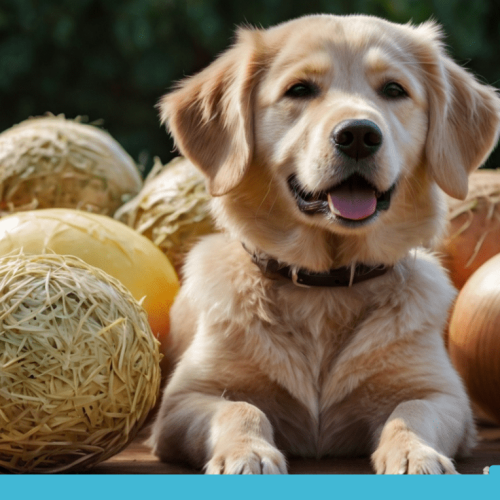Table of Contents
ToggleFighting Breeds: Understanding Their Traits and History
Fighting Dogs Breeds often spark curiosity and concern alike. Many people need to learn that while these breeds were developed initially for roles such as guarding and herding, their histories are often marred by misuse in dog fighting. Understanding the origins and traits of these breeds can help you make informed resolution about holding and rehabilitation.
If they are socialized and trained correctly, these dogs can be loyal and loving companions. It’s crucial to recognize the potential for aggression that may arise from their backgrounds, but with responsible ownership, they can form strong bonds with their families. By learning about their needs and behavior, you can help break the cycle of force that some have faced.
Key Takeaways
- Fighting dog breeds have complex histories tied to human activities.
- Responsible training and socialization are critical to their success as pets.
- Awareness of their traits can lead to better ownership decisions.
History of Fighting Dog Breeds

The history of fighting dog breeds is rich and complex, revealing how these dogs were shaped by human needs and societal values. From their ancient origins to their roles today, understanding this history provides insight into their breeding and use.
Ancient Breeds and Uses
Fighting dogs have roots in ancient civilizations. The Romans, for example, used dogs in blood sports during their empire. They often pitted these dogs against other animals, like bulls or bears, in arenas, such as the Colosseum.
Many early fighting breeds were developed for their strength and courage. The English Mastiff, an ancient breed, was a popular choice in these events.
As cultures evolved, the methods of using these dogs changed. They transitioned from fighting wild animals to facing each other in organized matches. This shift led to the breeding of dogs specifically for combat, further developing traits like stamina and tenacity.
Modern Development
In modern times, fighting dog breeds have become associated with illegal dog fighting rings. The American Pit Bull Terrier and the-Staffordshire Bull Horror are among the most recognized breeds used in these activities. Despite their fighting reputation, these dogs can be affectionate and loyal companions when adequately socialized and trained.
The legal and social landscape has also influenced these breeds. Laws banning dog fighting have been enacted in many countries. These measures aim to protect animals and promote responsible ownership.
As a result, awareness of responsible breeding and training has grown, helping to reshape the image of fighting breeds. Understanding their past allows for better care and management of these dogs today.
Characteristics of Fighting Dogs
Fighting dogs often share specific physical and behavioral traits that define their capabilities. Understanding these quality can help you appreciate their organic qualities.
Physical Attributes
Fighting dogs tend to have robust and muscular builds. Common features include:
- Size: Many breeds are large and robust, often weighing between 70 to 130 pounds.
- Muscle Structure: Powerful legs and broad chests contribute to their strength and stability.
- Coat Type: They usually have short, dense coats that are easy to maintain.
- Jaw Strength: Strong jaws are typical, allowing for effective gripping and holding.
These physical attributes also make them effective working dogs. Breeds like the Bully Kutta and Presa Canario exemplify strength and size, making them capable protectors in various environments.
Behavioral Traits
Behaviorally, fighting dogs show distinctive traits shaped by their breeding. Key behaviors include:
- Confidence: Many show boldness and self-assurance in new situations.
- Aggression: Some breeds may display aggressive tendencies, often resulting from human training and handling methods.
- Loyalty: A strong bond with their handlers is expected, making them protective companions.
- Tenacity: These dogs often exhibit strong determination and perseverance during tasks.
Understanding these traits can help you link with and manage them more effectively. Training and socialization are crucial to channel their instincts positively.
Controversies and Legal Issues

Fighting dog breeds are central to heated debates and legal battles. You will encounter significant issues around dog fighting laws and animal welfare concerns that highlight opposing views on these breeds’ treatment and regulation.
Dog Fighting Laws
Dog fighting is illegal in many-countries, including the United States and the UK. These laws aim to prevent violence against animals and reduce associated criminal activities. Violating these laws can lead to too bad penalties, including hefty fines and imprisonment.
Critical Points of Dog Fighting Laws:
- Criminal Penalties: In the US, penalties can reach up to three years in prison and fines exceeding $10,000.
- Confiscation of Animals: Authorities may seize dogs involved in fighting and applicable breeding operations.
Despite the legality of banning dog fighting, enforcing these laws poses challenges. Subcultures that support this practice often operate undercover, making it difficult for law enforcement to intervene.
Animal Welfare Concerns
Many animal welfare advocates argue that certain dog breeds are unfairly labeled as dangerous. The focus should be on responsible ownership rather than breed-specific legislation.
Main Concerns:
- Behavioral Misunderstanding: Some believe that behaviors attributed to fighting breeds stem from upbringing and training instead of inherent aggression.
- Impact of Laws: Breed bans can lead to the euthanization of innocent dogs and separate families from their pets.
Advocates argue that education and training programs can be more effective than outright bans. Promoting responsible ownership may lead to better outcomes for both dogs and owners.
Responsible Ownership and Rehabilitation

Being a responsible owner of a fighting breed dog requires dedication, understanding, and a dedication to proper care. This means focusing on the adoption process and ensuring that you can provide a provide for environment. Rehabilitation is also vital for these dogs, helping them overcome any past negative experiences and adapt to a suitable home life.
Adoption and Care
When considering adopting a fighting breed, it’s essential to do thorough research. Look into the specific needs of the breed to ensure you can meet them. Important factors include:
- Time Commitment: Dogs need daily exercise, socialization, and training.
- Safe Environment: Create a secure space where your dog can feel safe and relaxed.
- Training: Professional training helps teach positive behaviors and prevent aggression.
Adopting reputable shelters or rescues is crucial. They can provide valuable information about the dog’s history and temperament, allowing you to make an informed decision.
Rehabilitation Success Stories
Rehabilitation can transform the lives of fighting breed dogs. Many have had difficult pasts but can thrive with the proper support. Here are some critical elements of successful rehab:
- Patience: Progress takes time. Celebrate small victories.
- Positive Reinforcement: Use treats and praise to cheer good behavior.
- Socialization: Gradually introduce your dog to new people and environments to build confidence.
Numerous success stories highlight the impact of rehabilitation. For example, dogs labeled as “aggressive” can become family pets with love and proper training. When you commit to this journey, you not only help the dog but also change perceptions about the breed as a whole.
Frequently Asked Questions about Fighting Dogs Breeds
In this section, you will find answers to common questions about fighting dog breeds. These questions cover the breeds most associated with fighting, their characteristics, legal issues, and the history of their use in combat.
What dog breed is most commonly associated with dog fighting?
The Pit Bull is often the breed most linked to dog fighting. Due to their strength, agility, and tenacity, they have been historically used in these activities.
Which dog breeds have been historically used for fighting?
Several breeds have a history of being used for fighting, including the Rottweiler, Bull Terrier, and Mastiff. Each breed was chosen for its physical strength and combat abilities.
What are some characteristics of dogs bred for fighting?
Fighting dog breeds typically show traits like strength, aggression, and high energy. They often require experienced handlers who can provide proper training and socialization to manage their behavior.
Are there any dog breeds specifically banned due to their history of fighting?
Yes, some breeds face bans in various places due to their fighting history. Breeds like Pit Bulls and Rottweilers are often prohibited in certain areas to reduce the risks of aggressive incidents.
What is the legal status of dog fighting in various countries?
Dog fighting is illegal in many nation, including the United States and the United Kingdom. However, enforcement can vary greatly, and illegal fights still occur in some places.
Which dog breed is considered the strongest in combat?
The Rottweiler is often recognized for its strength in combat situations. Its powerful bite and sturdy build make it a formidable opponent in various scenarios.
Also Read : Dog Life Info











